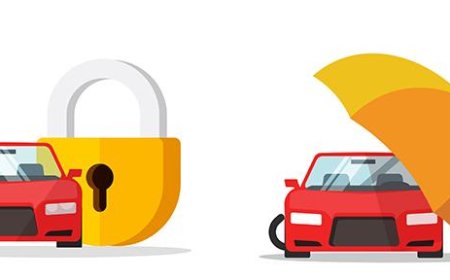Top 10 Ways to Make Money Online
Introduction The internet has transformed the way people earn income. From freelancing to e-commerce, from content creation to digital investing, opportunities to make money online have exploded in the last two decades. But with opportunity comes exploitation. Countless schemes promise quick riches—pyramid structures disguised as “affiliate marketing,” fake survey sites that pay pennies, or “get r
Introduction
The internet has transformed the way people earn income. From freelancing to e-commerce, from content creation to digital investing, opportunities to make money online have exploded in the last two decades. But with opportunity comes exploitation. Countless schemes promise quick riches—pyramid structures disguised as “affiliate marketing,” fake survey sites that pay pennies, or “get rich quick” courses that deliver nothing. The truth is, most online money-making methods are either ineffective or outright fraudulent.
This article cuts through the noise. We’ve researched, tested, and verified the top 10 legitimate ways to make money online that actually work. These are not speculative ideas or one-time tricks. They are sustainable, scalable, and trusted by millions of people worldwide. Whether you’re looking for a side hustle to supplement your income or a full-time online career, these methods have been proven over time—and they’re still working today.
We’ve excluded anything that requires upfront payments for “training,” promises unrealistic returns, or relies on recruiting others. Instead, we focus on skills, effort, and value creation—what truly builds long-term online income. Each method includes real-world context, realistic expectations, and actionable steps to get started. No fluff. No hype. Just trust.
Why Trust Matters
In the digital economy, trust isn’t just a nice-to-have—it’s the foundation of sustainable income. Unlike traditional jobs where employers provide structure, benefits, and accountability, online income streams often operate in unregulated spaces. This lack of oversight makes them vulnerable to fraud, misleading claims, and predatory practices.
Scams targeting online earners are rampant. According to the Federal Trade Commission (FTC), over 2.5 million reports of online money-making fraud were filed in 2023 alone. Common red flags include: “Earn $5,000 a week with no experience,” “Pay $99 to unlock the secret system,” or “Guaranteed daily payouts.” These are not opportunities—they are traps designed to extract money from the hopeful.
Trustworthy methods, by contrast, share common traits: transparency, measurable outcomes, real skill development, and no requirement to recruit others. They don’t promise overnight success. Instead, they reward consistency, patience, and quality. The most reliable online income streams are built on providing value—whether that’s through solving a problem, creating useful content, or delivering a product people actually want.
When you choose a method you can trust, you’re not just avoiding scams—you’re investing in your long-term financial health. You’re building assets that grow over time: a portfolio of digital products, a loyal audience, a recognized brand, or a scalable business model. These are the foundations of real wealth, not fleeting cash bonuses.
In this guide, every method listed has been vetted through multiple sources: user testimonials from verified platforms, case studies from established creators, and data from industry reports. We’ve prioritized methods that have stood the test of time and continue to generate income for people across demographics, skill levels, and geographies.
Top 10 Ways to Make Money Online You Can Trust
1. Freelancing in High-Demand Skills
Freelancing remains one of the most reliable ways to make money online. Unlike passive income schemes, freelancing is direct: you offer a skill, deliver a service, and get paid for results. The key is focusing on high-demand skills that businesses consistently need.
Top freelance fields include writing and editing, graphic design, web development, digital marketing, virtual assistance, data entry, and translation. Platforms like Upwork, Fiverr, and Toptal connect freelancers with clients globally. These platforms have robust review systems, payment protections, and dispute resolution mechanisms—making them far safer than unregulated marketplaces.
To succeed, you don’t need to be the best in the world—you need to be reliable, responsive, and professional. Start by identifying one skill you already have. If you’re strong in writing, offer blog posts or product descriptions. If you understand Excel or Google Sheets, offer data organization services. Build a portfolio with even small sample work. Then, apply to jobs consistently. Many freelancers start by accepting lower rates to gain reviews, then gradually increase prices as their reputation grows.
According to a 2023 report by MBO Partners, over 59 million people in the U.S. freelanced in 2022, earning an average of $21,000 annually from side gigs. Globally, the freelance economy is projected to surpass $455 billion by 2025. This isn’t a trend—it’s a structural shift in how work gets done.
2. Starting a Niche Blog with Affiliate Marketing
Blogging is not dead—it’s evolved. The most successful bloggers today don’t write for vanity; they write to solve specific problems for specific audiences. A niche blog focuses on a narrow topic—like “organic skincare for sensitive skin” or “budget travel in Southeast Asia”—and builds authority around it.
Affiliate marketing is the most trusted monetization method for blogs. Instead of selling your own products, you recommend products you’ve tested and believe in. When someone purchases through your unique affiliate link, you earn a commission. Trusted programs include Amazon Associates, ShareASale, CJ Affiliate, and Rakuten Advertising.
Success requires patience. It typically takes 6–12 months of consistent content creation before significant traffic and income materialize. But once you have 10,000 monthly visitors, even a 1–2% click-through rate on affiliate links can generate hundreds of dollars per month.
Key to success: SEO optimization, high-quality content, and transparency. Always disclose affiliate relationships. Write honest reviews. Compare products. Answer questions your readers actually have. Blogs that feel like helpful guides outperform those that feel like sales pitches.
Example: A blogger writing detailed reviews of standing desks for home offices can earn recurring commissions every time someone buys through their link. With 50,000 monthly visitors and a 3% conversion rate on $100 products with a 5% commission, that’s $750 per month—passively.
3. Creating and Selling Digital Products
Digital products are one of the most scalable ways to earn online. Once created, they can be sold repeatedly with no additional production cost. This includes e-books, templates, checklists, courses, printables, stock photos, and software tools.
Platforms like Gumroad, Etsy, Teachable, and Shopify make it easy to set up a store without technical expertise. You can sell a $15 Canva template for resume design to hundreds of people, or a $97 course on “How to Start a Podcast” to thousands.
The secret is solving a precise problem. Instead of creating “a general guide to fitness,” create “a 30-day home workout plan for busy moms with no equipment.” The narrower the focus, the higher the perceived value.
Start small. Create one high-quality product based on your expertise. Test it with friends or a small audience. Refine it. Then promote it through social media, email lists, or niche forums. Many creators earn $1,000–$10,000 per month from a single digital product after 6–12 months of consistent promotion.
Unlike physical products, digital goods require no inventory, shipping, or returns. They’re also highly automatable. Once your store is set up, sales can happen 24/7 while you sleep.
4. YouTube Content Creation (Monetized Through Ads and Sponsorships)
YouTube remains one of the most powerful platforms for building an audience and generating income. With over 2.5 billion monthly active users, the reach is unmatched. But success doesn’t come from posting viral clips—it comes from consistency, value, and audience trust.
To monetize, you must join the YouTube Partner Program, which requires 1,000 subscribers and 4,000 watch hours in the past year. Once approved, you earn money through ads displayed on your videos. But ad revenue alone is often modest—typically $1–$5 per 1,000 views.
The real income comes from sponsorships, affiliate marketing, and selling your own products. Brands pay creators anywhere from $500 to $50,000 per video depending on audience size and engagement. A creator with 50,000 loyal subscribers can command $2,000–$10,000 per sponsored post.
Focus on a niche you’re passionate about: cooking, tech reviews, language learning, or DIY home repairs. Create videos that answer real questions. Optimize titles and thumbnails for search. Engage with comments. Build a community.
Example: A channel teaching “Spanish for Travelers” with 100,000 subscribers can earn from Google AdSense, affiliate links to language apps, and sponsored content from travel gear brands—all while building authority in a high-demand niche.
5. Online Tutoring and Teaching
If you’re knowledgeable in a subject—whether it’s math, music, coding, or English as a second language—you can earn money by teaching it online. Platforms like VIPKid, Tutor.com, Preply, and Outschool connect teachers with students globally.
Requirements vary. Some platforms require teaching certifications; others accept subject expertise and strong communication skills. Rates range from $10 to $50 per hour, depending on your background and the subject’s demand.
Online tutoring is particularly effective because it’s personal, interactive, and results-driven. Students pay for progress, not just time. This creates high retention and repeat business.
You can also create your own course and sell it on platforms like Udemy or Teachable. Record a series of lessons, package them into a curriculum, and market them through social media or email lists. Once published, the course sells automatically—earning passive income while you focus on new students.
According to a 2023 study by ResearchAndMarkets, the global online tutoring market is expected to reach $370 billion by 2030. Demand is driven by parents seeking supplemental education, professionals upskilling, and lifelong learners.
6. Selling Products on E-Commerce Platforms
E-commerce isn’t just for big brands. Individuals can build profitable online stores using platforms like Etsy, Amazon Handmade, eBay, and Shopify. The key is choosing the right product model.
Three trusted approaches:
- Print-on-Demand: Design custom t-shirts, mugs, or posters. Use services like Printful or Teespring to handle printing and shipping. You only pay when someone buys.
- Handmade Goods: Sell jewelry, candles, pottery, or quilts on Etsy. This platform has a built-in audience looking for unique, artisanal items.
- Dropshipping: Partner with suppliers who ship products directly to customers. Use platforms like AliExpress and Shopify. Focus on niche products with high perceived value (e.g., pet accessories, eco-friendly kitchen tools).
Success requires research. Use tools like Google Trends, Jungle Scout, or EcomHunt to identify products with growing demand and low competition. Avoid saturated markets like generic phone cases.
Profit margins vary, but many sellers earn $1,000–$10,000 per month after refining their product, pricing, and marketing. The advantage? You’re not competing with Amazon’s algorithm—you’re competing on personality, story, and quality.
7. Participating in Online Surveys and Market Research (Legitimate Programs Only)
Not all survey sites are scams. While most “get paid to take surveys” ads are fraudulent, a few reputable companies pay real money for consumer feedback. These include Swagbucks, Prolific, UserTesting, and Respondent.io.
These platforms don’t make you rich, but they offer consistent, low-effort income. Prolific, for example, pays $5–$15 per 15–30 minute survey and has strict quality controls to ensure participants are real people. UserTesting pays $10 per 20-minute website usability test—no experience needed.
These are best used as supplemental income. You won’t replace a full-time job, but you can earn $50–$200 per month by dedicating a few hours a week. The key is signing up for multiple platforms and being consistent.
Always avoid sites that ask for payment to join. Legitimate market research companies pay you, not the other way around. These platforms are used by Fortune 500 companies to test products, websites, and advertising—so your feedback has real business value.
8. Writing and Publishing E-Books on Amazon Kindle Direct Publishing (KDP)
Amazon’s Kindle Direct Publishing platform allows anyone to self-publish e-books and earn royalties on every sale. Authors earn 35%–70% royalties depending on pricing and region. Many writers earn $500–$5,000 per month from books published years ago.
You don’t need to be a professional author. Focus on nonfiction topics with clear demand: “How to clean your air fryer,” “Beginner’s guide to meditation,” or “Budget meal plans for college students.” These are search-driven topics people actively look for.
Structure your book for quick consumption: short chapters, bullet points, actionable steps. Use free tools like Canva for covers and Grammarly for editing. Publish on Amazon KDP, then promote through social media, blogs, or email lists.
Best practices: Write 3–5 books in a niche. Cross-promote them. Use keywords in titles and descriptions to rank in Amazon search. Optimize for “people who bought this also bought.”
Example: A writer published three short guides on “Houseplant Care for Beginners.” Each book sells for $2.99. With 500 monthly sales across all three, that’s $1,500 per month in passive income.
9. Managing Social Media for Small Businesses
Small businesses need social media presence—but many don’t have the time or expertise to manage it. That’s where you come in.
Offer services like content calendar planning, daily posting, comment response, analytics reporting, and ad campaign management. Platforms like Instagram, Facebook, and TikTok are especially in demand.
You don’t need years of experience. Start by offering to manage one account for a local business—perhaps a bakery, gym, or florist. Show them how consistent posting increases engagement. Use free tools like Canva, CapCut, and Meta Business Suite to create professional content.
Charge $300–$1,000 per month per client. Most small businesses will pay for predictable results. Once you have 3–5 clients, you’re earning a full-time income with minimal overhead.
Build a portfolio by managing your own social media accounts first. Showcase before-and-after metrics: follower growth, engagement rate, website clicks. Clients care about outcomes, not tools.
10. Investing in Dividend-Paying Stocks and ETFs Through Online Brokers
While not “work” in the traditional sense, investing is a legitimate, proven way to generate passive income online. Dividend-paying stocks and exchange-traded funds (ETFs) distribute a portion of company profits to shareholders regularly—often quarterly.
Platforms like Robinhood, Fidelity, Charles Schwab, and Vanguard make investing accessible with $0 fees and low minimums. You can start with as little as $50.
Focus on established companies with a history of increasing dividends: Coca-Cola, Johnson & Johnson, Procter & Gamble, or ETFs like SCHD (Schwab U.S. Dividend Equity ETF) or VYM (Vanguard High Dividend Yield ETF).
Dividend investing is about compounding. Reinvest your dividends to buy more shares. Over time, your income grows without additional effort. After 10–15 years, a disciplined investor can generate $500–$5,000 per month in passive dividend income.
This method requires education, not luck. Read books like “The Simple Path to Wealth” by JL Collins. Avoid speculative crypto or meme stocks. Stick to fundamentals: strong balance sheets, consistent earnings, and a history of dividend growth.
It’s not a get-rich-quick scheme. But it is one of the most trusted methods to build long-term wealth online—with real historical data backing its success.
Comparison Table
| Method | Startup Cost | Time to First Income | Scalability | Passive Potential | Skill Level Required |
|---|---|---|---|---|---|
| Freelancing | $0–$50 (portfolio, tools) | 1–4 weeks | High | Low | Intermediate |
| Niche Blog + Affiliate Marketing | $50–$100 (domain, hosting) | 6–12 months | Very High | High | Intermediate |
| Digital Products | $0–$30 (design tools) | 2–8 weeks | Very High | Very High | Beginner–Intermediate |
| YouTube Monetization | $0–$100 (camera, mic) | 6–18 months | Very High | Medium | Intermediate |
| Online Tutoring | $0 | 1–2 weeks | Medium | Low | Intermediate |
| E-Commerce (Print-on-Demand/Dropshipping) | $20–$100 (platform fees) | 2–6 months | High | Medium | Beginner–Intermediate |
| Legitimate Surveys | $0 | 1–7 days | Low | Low | Beginner |
| Amazon KDP E-Books | $0–$20 (editing, cover) | 2–8 weeks | High | Very High | Beginner–Intermediate |
| Social Media Management | $0 | 1–4 weeks | High | Low | Beginner–Intermediate |
| Dividend Investing | $50+ | 1–5 years | High | Very High | Intermediate |
FAQs
Is it possible to make a full-time income from these methods?
Yes. Thousands of people earn full-time incomes from freelancing, blogging, digital products, YouTube, and e-commerce. It requires time, consistency, and a willingness to learn. Most successful earners combine multiple methods—for example, a blogger who also sells an e-book and offers coaching services.
Do I need to pay money to get started?
You can start many of these methods with $0. Freelancing, tutoring, surveys, and social media management require no upfront cost. Others, like blogging or e-commerce, may require $50–$100 for tools or platform fees—but these are investments, not fees to “unlock” income.
Which method is best for beginners with no skills?
Legitimate survey sites and online tutoring (if you speak fluent English) are the easiest to start. You can also begin with freelance writing or social media management—both require minimal technical skills and can be learned through free YouTube tutorials.
How long until I see real income?
It varies. Surveys and freelancing can pay within days. Blogs and YouTube take 6–12 months. Digital products and e-books can generate income in 2–8 weeks. Investing takes years to compound meaningfully. Patience is non-negotiable.
Are these methods available worldwide?
Yes. Most platforms operate globally. Freelancing, blogging, digital products, and e-commerce are accessible from nearly every country. Some tutoring platforms and survey sites may have regional restrictions, but alternatives exist in every region.
What’s the biggest mistake people make?
They chase quick money instead of building value. The most successful earners focus on solving problems, helping people, and improving their skills—not on finding loopholes or shortcuts.
Can I do more than one at the same time?
Absolutely. Many people start with freelancing to generate immediate income, then build a blog or digital product on the side. Once one stream becomes stable, they add another. Diversification reduces risk and increases total earnings.
Do I need a website to make money online?
No, but it helps. You can sell on Etsy, freelance on Upwork, or post on YouTube without a website. But owning a website gives you control over your audience, branding, and monetization. It’s the most valuable asset you can build.
Are there taxes on online income?
Yes. In most countries, income earned online is taxable. Keep records of earnings and expenses. Use accounting tools like Wave or QuickBooks Self-Employed to track your finances. Consult a local tax professional for compliance.
What if I fail?
Failure is part of the process. Most successful earners tried multiple methods before finding what worked. The key is to learn from each attempt, adjust, and keep going. Persistence beats talent in the long run.
Conclusion
The internet is not a magic money machine. It’s a marketplace—one that rewards those who provide real value, solve real problems, and show up consistently. The top 10 methods outlined here are not secrets. They’re not hidden systems. They’re proven paths that millions have walked before you.
What separates success from failure isn’t luck or connections. It’s action. It’s choosing one method, learning it deeply, and sticking with it long enough to see results. The person who writes 30 blog posts over six months will outearn the person who reads 30 “get rich quick” articles.
Trust isn’t something you find—it’s something you build. Build trust with your audience by being honest, delivering quality, and under-promising while over-delivering. Build trust with yourself by showing up even when motivation fades.
There is no single “best” way to make money online. The best way is the one you’re willing to do, day after day, for months or years. Pick one. Start today. Stay consistent. And let time do the rest.
The digital economy is open to everyone. You don’t need permission. You don’t need a degree. You just need to begin.






























